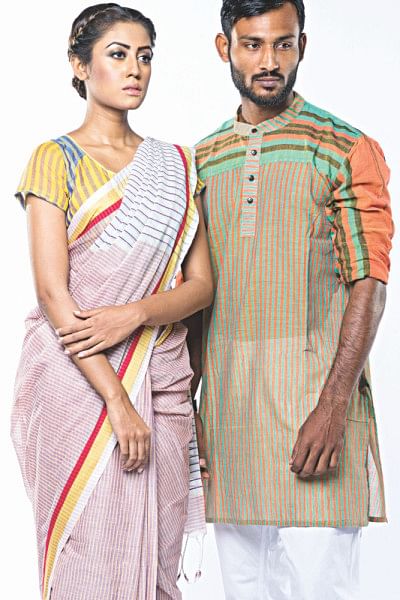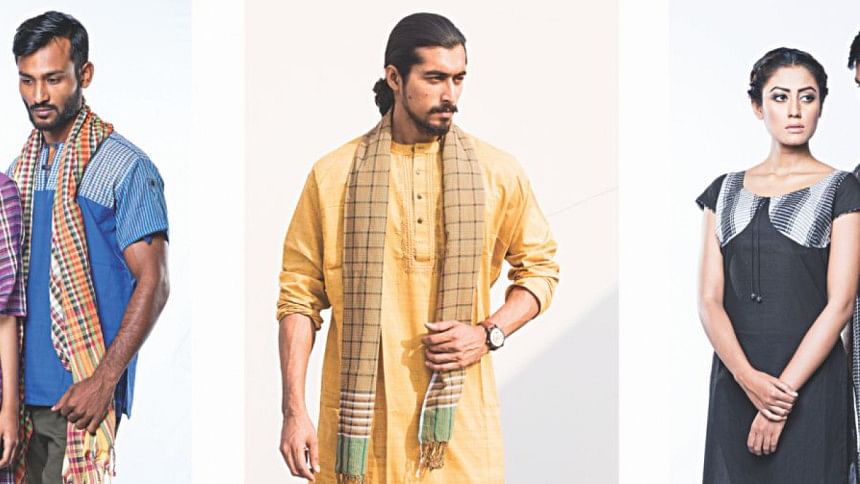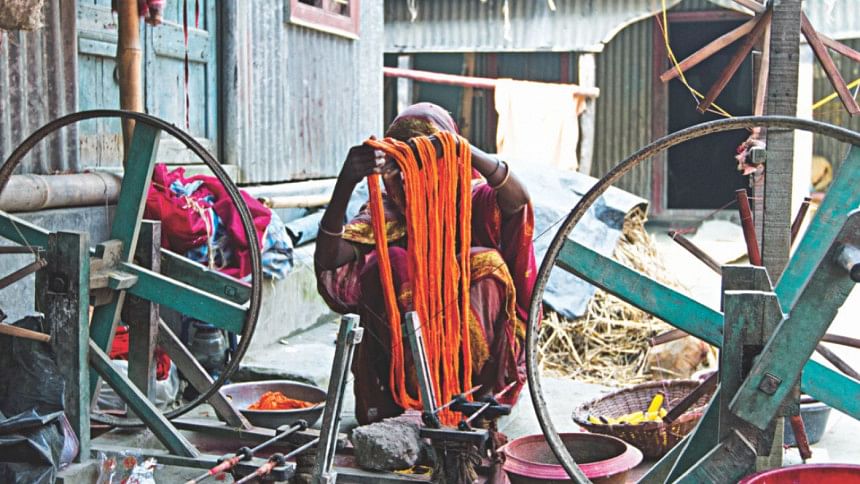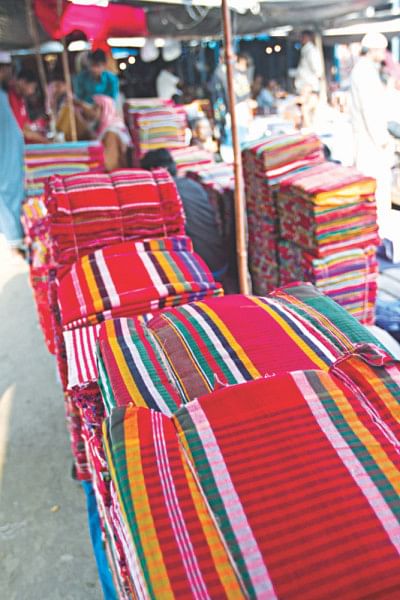The life cycle of Gamcha

Even though the use of gamchas started many years ago, more uses have been added to the list of uses. More commonly, the material is used for decorating homes as the fabric is very eye catching and gives the house a true traditional essence.
Decorating the house using gamcha is becoming a common phenomenon now a days, as it is a part of Bangladeshi culture and heritage, adding this fabric to one's house brings in a lot of character. Also, the eye-catching colours of the beautiful garment have the ability to lift up the look of any room and brighten the interior. That is why curtains, bed covers, and place mats are now being made with colourful gamcha material.
That's not all, the true beauty of gamcha is also portrayed in the saris. Fashion trends have now become very inclusive when it comes to gamcha and other traditional materials. Women of all ages opt to wear cloths made using gamchas during numerous cultural events and festivals.
Modern uses are plenty, but gamchas were introduced centuries ago in Southeast Asia and have been used since then for numerous things. The first and probably the most obvious use of gamcha would be as a towel. As the fabric is good at absorbing water, men and women have used it after baths. It is still used as a towel in most of the villages and by a huge number of people who prefer the soft material of the gamcha to thick western towels.
From the old black and white pictures of '80s to this day we see how roadside vendors use gamchas to protect their face from the sun by wrapping the cloth around their heads. This thin and soft fabric is also exceptionally good at absorbing the sweat from the head so that it does not go to the vendors' or the rickshaw pullers' eyes and sting them.
Now for the making of gamchas; the fabric is made from cotton and traditionally centres like Bogura, Pabna, Chattogram and Dhaka have been known to make the best cotton gamchas. There are many other cities where gamchas are made and sold, but it is the most common from these four cities.

And as for its whereabouts, the best place to find good quality and cheap gamcha in Dhaka would be New Market. Even though these are sold everywhere — vendors knock on car doors when people are stuck in traffic to sell gamchas. But honestly, they seem to all disappear just when they are needed the most. That is exactly why New Market is the most reliable option, as it does not vanish and provides a large variety of colours.
In Dhaka, more and more people are adopting the western trends, so a lot of the old traditions are getting lost in time. One person who has tried the level best to keep our traditions and customs alive is Bibi Russell. She has had an impact on people all over the world from a very early age, she took the international modelling world by a storm and now, years later she is doing her best to make Bangladeshis stay true to their origins.


Bibi Production was created in 1995 and along with that was created new hopes for the Bengali culture. Gamcha, khaadi, Jamdani and cotton are used to make everything and anything in Bibi Production. The use of gamcha in our daily fashion now is a contribution of her hard work.
With traditional fabrics like gamcha as her weapon, Bibi Russell was able to win the over the fashion industry. The proof of that is ever present in every Bangladeshi fashion magazine. Gamchas have become the staple piece, beautifully draped on the models.
Due to the latest development of gamcha, the weavers are the ones who have gained the most. This is exactly what Bibi Russell wanted when she started her business. In the past when gamchas where only used for common tasks, the demand was little. But, now as it is being used to make saris, accessories and for home decoration, more and more weavers are able to run their homes with what they earn from producing it.
There are so many aspects of our culture that have been taken apart and have been forgotten, but with a little bit of work and respect for our traditions and cultures we can have a firm grip on what is ours. That will surely secure our place on the map.

Photo: Sazzad Ibne Sayed
Model: Oshin, Ferdose, Rabbi
Wardrobe: Bibi Production
Make-up: Farzana Shakil's Makeover Salon
Styling: Sonia Yeasmin Isha





Comments